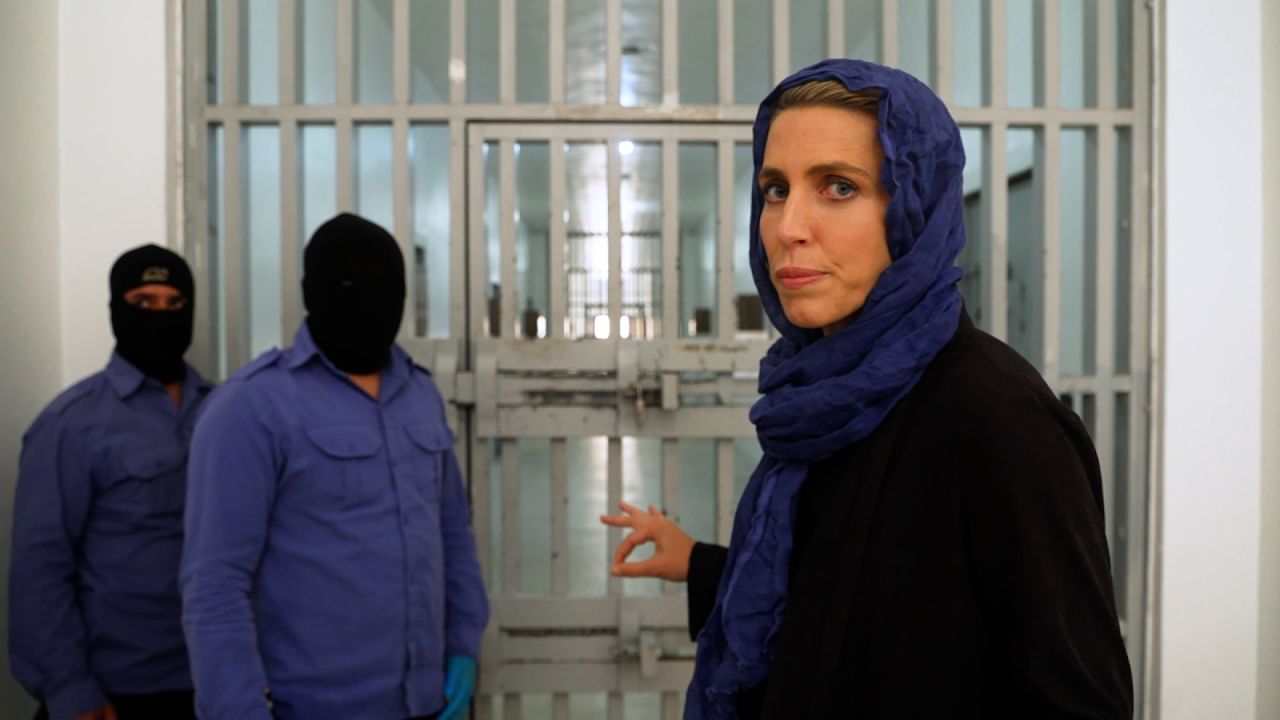CNN
—
The recent arrests of eight Tajik nationals with suspected ties to ISIS have raised concerns among national security officials that a dangerous affiliate of the splinter terrorist group could carry out attacks on US soil, according to multiple US officials who spoke to CNN.
Members of the group initially entered the United States at the southern border and applied for asylum under U.S. immigration law. It is unclear whether they entered the country at the same time or in the same places.
Officials said the men had already been vetted by immigration authorities and allowed into the country by the time their ties to ISIS were discovered through intelligence about ISIS targets overseas.
There is no hard evidence that they were sent to the United States as part of a terror plot, but at least some Tajiks have expressed extremist rhetoric on social media or in direct private communications that could be monitored by U.S. intelligence agencies, the three officials said.
The discovery prompted federal agents and analysts to launch an emergency investigation across the country that included physical and electronic surveillance of the men, sources said, a counterterrorism operation reminiscent of the years immediately following 9/11, when the FBI investigated numerous domestic conspiracies.
After a period of surveillance, federal authorities were recently faced with a difficult decision: continue to monitor the men to determine if they were part of a potential terror plot or a broader terrorist network, or step in and take them off the streets. Rather than risk a potential attack, which would be the worst-case scenario, US officials decided to step in and have ICE agents arrest the men, a source told CNN.
The men are in federal custody on suspicion of immigration violations and will ultimately be deported as a result of an anti-terrorism investigation.
Of particular concern to U.S. authorities was that the men were from Tajikistan, a corner of Central Asia that in recent years has been a persistent recruiting target for the Afghanistan-affiliated Islamist group ISIS-K, led largely by ethnic Tajiks who have carried out a series of recent attacks in Europe on behalf of the group, including the Crocus Hall attack in Moscow in March that left more than 100 people dead.
National security officials fear that at least some of the eight Tajiks may have been radicalized by ISIS-K while in the United States because they suffered isolation, economic stress and discrimination — all factors that make them susceptible to ISIS propaganda that glorifies violence.
Government officials now consider so-called “lone wolf” attackers who appear out of nowhere to be a more likely, and potentially equally dangerous, threat than traditional organized plots carried out by trained operatives.
Compared with terrorist networks, whose communications could lead to surveillance misuse, single individuals who keep their attack plans secret pose a greater challenge for security authorities.
“We can’t assume it’s not all of the above,” one U.S. official said. “It’s too early to know all we want to know about the depth and nature of any ties that may exist between these eight individuals and ISIS.”
The incident comes as senior intelligence officials publicly warn that global events have made the risk of a terrorist attack on the U.S. homeland the highest it has been in recent memory, even as many national security officials acknowledge that the U.S. withdrawal from Afghanistan and other parts of the Middle East has reduced intelligence gathering on traditional terrorism threats.
“It’s no secret that we are collecting less intelligence since we’ve reduced our military capabilities around the world. It’s a trade-off we’ve always known we’re making,” the senior U.S. official said.
Former acting CIA director Michael Morell co-wrote a widely published piece in Foreign Affairs magazine this week warning that terrorism warning lights are “flashing red,” echoing FBI Director Christopher Wray’s recent warning that “everywhere you look, you see flashing lights.”
“The combination of terrorist groups’ stated intent, the growing capabilities they have demonstrated in recent successful and failed attacks around the world, and the fact that several serious plots have been thwarted in the United States confront us with an unpleasant but inevitable conclusion,” the Foreign Affairs article states. “Simply put, the United States faces a serious threat of terrorist attack in the coming months.”
Intelligence officials are keenly aware of gaps in their intelligence gathering in Afghanistan, where ISIS-K has its main base. Although officials believe ISIS-K primarily aims to radicalize and inspire attackers, not train and deploy operatives, the group’s rise is a relatively new phenomenon, meaning there is a lot U.S. counterterrorism analysts don’t know about ISIS-K’s strategy, recruitment efforts and operational tactics.
U.S. officials and analysts who track radical Islamic terror groups closely know that ISIS-K has dramatically stepped up its online propaganda machine. Rather than training and deploying fighters, as al-Qaida did with the 9/11 attacks, ISIS-K is instead focused on radicalizing vulnerable people. Tajikistan, for example, is one of the world’s poorest countries, and its people face extreme religious persecution — two factors that terrorism experts say could lead to radicalization.

A look inside a maximum security prison holding suspected ISIS fighters in Syria
Colin Clark, a researcher into terrorism, said the group was creating “charismatic propaganda” and “appealing to its established diaspora in Europe, North America and Central Asia, seeking to inspire people to carry out attacks.”
“It seems like it’s just a matter of time before they pull something off,” Clark said.
The arrests also focus attention on the vulnerability of the U.S. southern border, an issue Republicans have emphasized this presidential election year.
“We are literally living on borrowed time,” Republican Sen. James Lankford of Oklahoma said Wednesday on the Senate floor while speaking about the threat of terrorists entering the U.S. from the southern border.
A report released June 7 by the Department of Homeland Security’s inspector general found that asylum seekers were not always screened in a timely manner and that border patrol officers did not have access to all the federal data they needed to screen foreign nationals seeking entry into the United States.
The report said the US “risks admitting dangerous individuals or allowing asylum seekers to continue to reside in the United States who may pose significant threats to public safety and national security.”
U.S. authorities have been paying particular attention to migrants from Central Asian countries, including Tajikistan, since it was discovered last summer that a group of Uzbek nationals who crossed the southern border had been helped to reach the United States by intermediaries with ties to ISIS.
The incident triggered a scramble across the U.S. government to locate and investigate these individuals.
Two U.S. officials also said the move would encourage national security officials to ensure that immigration and intelligence agencies properly monitor travelers from Tajikistan, Uzbekistan and Kazakhstan.
“I [the incident with the Uzbek nationals] “What we did last summer was to suggest that Central Asians were a group of potential concern, given what we now know about the global ISIS network,” the senior U.S. official said.
In 2023, CBP reported 169 encounters with individuals identified as “potential matches” to those named on the terrorism watch list.
But U.S. officials argue that it’s not necessarily a reliable measure of the number of actual terrorists trying to enter the U.S. If someone’s name is on a terrorist watch list, it can mean a variety of things. The person could have very loose, weak ties to known terrorists. Or they could belong to a legacy terrorist organization, like the FARC, that’s not known for carrying out attacks on U.S. territory. Or they could simply have a name similar to someone who is the subject of legitimate concern.
That’s exactly what happened with a Jordanian national arrested earlier this year at the entrance to the Marine Corps base at Quantico, two senior U.S. officials said. His name came up on one watch list but turned out to be a “no match,” the official said.
In a poor country like Tajikistan, the mix of crime and terrorism is very difficult for law enforcement to uncover: an individual may not have sympathies for ISIS, for example, even if they had regular contact with a family member who did paid work for the group.
But Clark points out that there are risks: “Poverty will deepen. [and] A deeply devout population oppressed by its leaders: it’s a near-perfect formula for exporting jihadists.”
“It’s become a cliché, but it’s absolutely true: We may be done with ISIS, but ISIS isn’t done with us,” one law enforcement source said.

